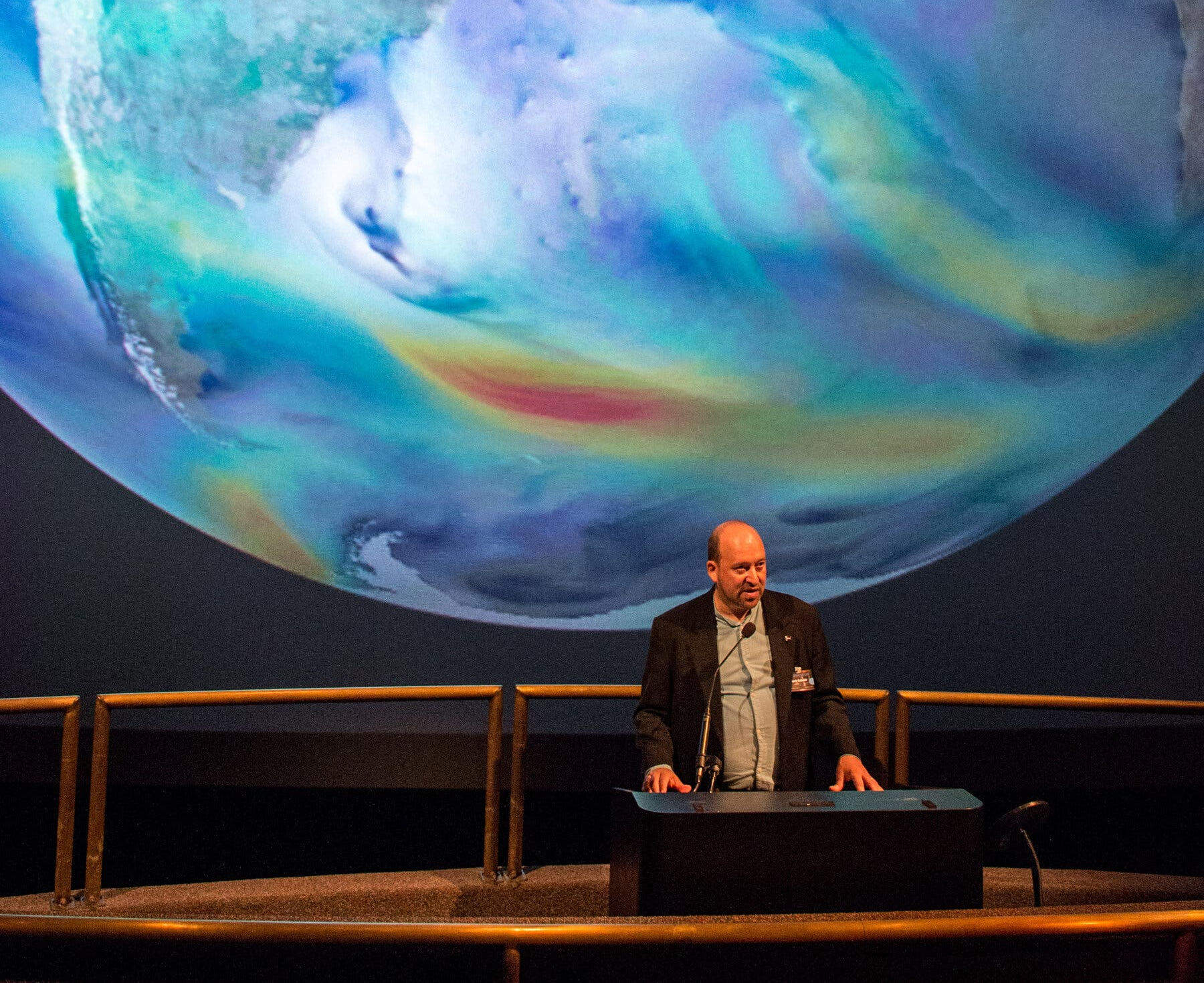
Bill Hrybyk/Goddard, via NASA
Time, Layers, and Climate Futures: A Conversation with Dr. Gavin A. Schmidt
Director, NASA Goddard Institute for Space Studies
By Gayil Nalls
Sign up for our monthly newsletter!
At the World Sensorium Conservancy, we often speak about time in layers—how ecological, cultural, and sensory histories are embedded in the present and shape our shared future. Few scientists work with these layered temporalities as directly as Dr. Gavin A. Schmidt, Director of NASA’s Goddard Institute for Space Studies.
Dr. Schmidt’s research bridges the deep past and the unfolding future, drawing on paleoclimate records, instrumental data, and sophisticated Earth System Models to understand how internal climate variability and external forcings, such as greenhouse gas emissions, interact to shape our planet’s trajectory. His work also grapples with the challenge of translating complex science into meaningful projections that can inform decisions today.
In this recent conversation for Plantings, we explore how climate variability, both natural and human-driven, affects biodiversity and the living systems we depend on, and how lessons from ice cores, tree rings, and coral skeletons might guide us toward a more resilient future.
Dr. Schmidt reminds us that the future is not fixed—it’s shaped by choices made in the noisy, layered present. The climate system is vast and complex, but also deeply responsive to human action. The lessons of the past, embedded in ice, coral, and soil, offer both caution and guidance. To heed them is to act not just for our own resilience, but for the living systems and cultural heritage that make the world habitable.
Gayil Nalls: My first question is about Earth’s climate variability and human futures. Your work focuses on both natural internal climate variability and the climate system’s complex response to external forcings. How do these dual forces shape the reliability of our future climate projections, and what do you see as the greatest scientific challenge in narrowing uncertainties?
Gavin Schmidt: When we look at satellite data and we see a very complex set of things. If you look at a satellite map of clouds or of dust storms, everything is very intermingled. Everything is very chaotic and noisy, and it is chaotic in a very strict mathematical sense of the word. Yet we know that if you push the system through changes in the earth’s orbit, or big volcanic eruptions, or the sun waxing and waning as it goes through its 11-year cycle, we know that we can see clear changes even though it’s a very, very noisy system.
When you’re looking at the system, you’re trying to understand what’s going on, you have to always have both of those things in mind, that there is a lot of internal variability that’s related to the weather patterns, or whether there’s El Nino or whether there’s this kind of thing going on in the southern hemisphere or this kind of thing going on in the North Pacific. These things just occur in unpredictable ways, and we can assess how unpredictable that is. The weather itself is not really predictable beyond about 10 to 14 days from a very fundamental standpoint. One can think of that chaotic component as noise, as something that is hiding the signal that might be deeper in. You can sometimes average way to get to the signal that might be due to something changing in the boundary condition, something changing in the greenhouse gases or in the land surface or in the, I mentioned the volcanoes or the orbit of the earth.
But it means that you have to look at the difference between predictions and the real world a little bit carefully because the real world has that climate signal that you might be looking for, but it also has random noise. Because we can’t predict that random noise and our models produce things that look kind of coherent to that noise but also have these climate change patterns in them as well. We have to be very careful about how we compare these two things because the noise might be different in the real world than it is in a model. If we don’t take that into account, we can fool ourselves into thinking that something is happening much faster or much slower in the real world than in the model. But really, it is just part of that noise, and we’re not really taking that into account.
We have to be cognizant of these different sources of signal and be kind of careful about how we interpret things that we see. You might remember a decade or so ago, there were some folks who were very concerned that Arctic Sea ice was going to disappear imminently. That was based on one or two outlier points, which, if you put a line through it would say, oh my gosh, everything is falling apart. Wiser voices canceled and said, no, no, no, no, you have to take into account the noise. Not everything is the climate. Some of it’s just going to be the weather. And those people, who included me, were correct, and the ice didn’t disappear the next year. It didn’t follow that trajectory. Now, if you look at it, it looks like there was just a blip, not a noisy blip that occurred.
So you have to be careful. Of course, that rolls over and impacts how you make predictions because if you can’t predict that noise, the internal variability beyond a few days, and I’m trying to make climate predictions for decades, then there’s obviously going to be some irreducible uncertainty about what’s going on. Because A, we don’t know exactly what that noise is, and B, there may be changes to that noise that are subsequent functions of climate change. We can never have a purely deterministic climate prediction that the temperature in July 2050 will be exactly this temperature. We will never be able to do that. We have to always think about climate predictions and planet projections as being inherently noisy. Now, is that a problem? Is that not a problem? It’s mostly not a problem because the signals show how much the climate has changed because of increases in greenhouse gases, because of changes in aerosols or ozone, or all the rest of it, those are large changes.
It turns out that you don’t really need to average for very long or across very many different things in order to be able to see that signal. When I’m predicting climate for 2050, it turns out that at the global level, particularly the noise component doesn’t really make very much difference. The big uncertainty for those kinds of future projections is what we decide to do. What are we as a society going to emit into the atmosphere? How much deforestation are we going to allow? How much pollution are we going to allow? All of those things have a bigger impact on temperatures in 2050 than worrying about the noise of whether there’s going to be an El Nina or a La Nina or some other kind of weather event.
GN: How do aerosols and air quality factor into the climate system and public health?
GS: There are lots of natural aerosols, dust in the air, haze from forests, sea salt from the ocean. Those are lots of natural things. But we’ve changed the aerosol composition by putting in lots of criteria, air pollutants, nitrate, sulfates, and they come from internal combustion engines from burning dirty coal, some agricultural practices and the industry. And those have changed the composition of the atmosphere, particularly in the post-war period, kind of peaking around late 1970s, early 1980s, and then we’ve been cleaning up our air ever since. Those changes, the fact that we were putting so much stuff into the atmosphere in and of itself had a climate impact that was separate from the climate impact of greenhouse gases
GN: From this information, can people project potential health risks?
GS: There are a lot of things, like climate, that are not independent of air quality, which is not independent of public health, which is not independent of the ecosystems. All of these things both interact but also have direct consequences. Aerosols are very unhealthy in areas or cities where aerosols are very high. The premature mortality can reach into the hundreds of thousands of people per year. I mean, it’s really very nasty stuff.
GN: At WS/C, we often think about deep time, both in ecological and cultural terms. What can paleoclimate records, from ice cores to tree rings, to coral skeletons, teach us about resilience in the face of climate change, and how should these lessons inform current policy and adaptation strategies?
GS: There’s a lot to be learned from the past, and I think that’s implicit in your question. How do we know what happened? You mentioned a few of the proxy archives: ice cores, tree rings, and ocean sediments, which give us records going back maybe a hundred million years. Then we have the rock record on land. Through these sources, we can trace major extinction events in the paleoclimate record. We’ve assembled both temperature and carbon dioxide records covering the last 500 million years, and these clearly show connections between what happens in the atmosphere, the climate, and ecosystems.
We use this paleoclimate record to test and refine our understanding—testing how well climate models match what happened during past warm periods like the Pliocene, three million years ago, or the Eocene, some 50 million years ago. These are tough tests, and earlier models didn’t perform very well, but newer models are doing better. This helps us calibrate how much warming to expect in the future. For example, paleoclimate data help constrain concepts like equilibrium climate sensitivity—basically, how much the planet warms when carbon dioxide levels double. That sets important limits on what we can expect as CO₂ continues to rise.
It’s not just about testing models. The paleoclimate record also tells us about resilience—how ecosystems and species responded to change. Plants and animals shift with climate: they follow water and temperature, retreat from rising seas, and expand during lower sea levels. We have detailed information about how rainforests became savannas during dry periods and then recovered, showing both resilience and limits of tolerance.
This isn’t precise enough to say, for example, “everything is fine until 1.67 °C above pre-industrial and then it all collapses.” It does give us a sense of where tipping points might lie—for corals, fisheries, forests, or trees—how cold or warm conditions affect their viability, and how long recovery might take. All of this is accessible through the paleoclimate record, offering countless insights into how the Earth has responded to past climate changes.
GN: Many experts say we’re already in the midst of an extinction crisis. What lessons can we draw from the past that should inform current policies and strategies?
GS: Well, I think the biggest thing that we need to learn is that things are not always as they are, that things change, and things can change quite quickly. I think we have a heuristic bias in thinking that whatever is around us right now has always been there and will always stay there. And that is a bias that’s not real. That’s not what history tells us. The history tells us that things were very different before, and they can be very different again. So when people talk about the extinction crisis, people think, oh, well, it’s just an obscure insect here, or maybe like a rare bird or something. It’s not like all of them. It’s not everything. But when you go back into the past and you see when the whole system has been stressed to a breaking point, you get these mass extinction events.
Obviously, the most famous is the asteroid that hit at the end of the Cretaceous, but the other extinction events were not externally driven. They appear to be internally driven, and you end up with situations where the carbon cycle goes crazy, the land surface goes crazy, and you end up with the extinction of something like 80% of all species. Those are absolutely terrifying things that most species did not survive. Looking into that record and trying to piece together what the antecedent causes were, what the responses were, and how it all kind of played out is vitally important to understanding our particular moment, where there is an extinction crisis, and it’s driven by multiple stresses on the environment. The climate is one of them, but also habitat loss, biomass destruction, the UNC connectedness of preserves and wilderness, which means that as climate changes, animals and species can’t just migrate continuously towards more appropriate climate regimes, they’re kind of blocked because you know what? That’s the end of the park, and you can’t go any further north. You can’t go any further up. The habitat loss and the climate change and the poaching and all of those kinds of things, they combine to threaten not just individual species but whole ecosystems.
GN: Earth system models incorporate vast and complex data sets. In your experience, what are the most effective ways to translate this complexity into public understanding without oversimplifying, and how important is this translation to inspiring climate action?
GS: This is absolutely fundamental. As you mentioned, these system models have grown over the years. They’ve accumulated more and more complexity and more and more components that even the people running them are not totally aware of everything that’s in these models. I mean, like the million lines of code plus types of simulations. It turns out that you need to include that to be able to get the things that people care about, which is, for instance, how the weather is going to change by the time we get to 2030, 2050…. And those models have been getting better. They have more skills than they used to have. They match connections that we can see in the real world much better. But most of the work that is done with these models is not really a public friendly kind of environment, but the impacts of climate change and what we need to protect against, what we need to adapt to, what we need to avoid, all of those things can be extracted from these models in ways that are much more user-friendly and much more salient to people’s lives and needs.
But it is something that’s quite complicated. It turns out that what an apple farmer in upstate New York is sensitive to with respect to the climate is very different from a corn grower in Iowa, which is very different from a subsistence farmer in the Amazon, which is very different from somebody growing taro or cassava in Africa. All of those people have a need to know about what the climate is going to be like, how it is going to change from what they’ve been expecting. We haven’t yet really found a universal language that allows for these people to get exactly what they need, these people to get exactly what they need in a way that doesn’t require them to learn a huge amount of technical stuff. That’s a failure on the scientific and governmental side. We should have been working more to produce that kind of information in an accessible way.
There have been many efforts over the years to try and do that. I think it’s fair to say that we have not succeeded in doing that except for a few big users, a few savvy groups of people. But for most people, for most things, the information that could be useful to them is not accessible to them. I think that that is something that the community writ large and the funding authorities more specifically really need to do. They should have focused on it before, but they really need to focus on it more going forward because the information that’s coming out of the models and the projections has never been more salient. Ten years ago, you might’ve got away with saying, oh, there’s climate change. We can see it in these big numbers like the global mean, we can see it in the Arctic, but it’s not really affecting me where I live in the last 10 years. That kind of attitude has evaporated. People are seeing changes. They’re seeing unprecedented events in their local communities of different kinds in different places, whether it’s wildfire, intense rainfall, coastal flooding, heat waves, et cetera. It’s no longer the case that the climate change impacts are esoteric, something that’s happening to somebody else. They’re happening.
The need to know has become much more salient. The questions that people are asking are much more specific, and we as a scientific community have not yet risen to that challenge of providing those people with what they need to know.
“The urgent need right now is to reduce emissions. That means phasing out internal combustion engines, ending the burning of coal and natural gas, and stopping deforestation. If we focused on those things, we’d address about 80% of the problem.”
Dr. Gavin Schmidt,
Director, NASA Goddard Institute for Space Studies
GN: Yes, I know a lot of people who, when it comes to restoration and preparation, want precise guidance on what species to plant. How hot is it going to get here—and how quickly? What climate are they actually planting or restoring for?
GS: Well, exactly, yes, those are absolutely vital questions.
GN: You’ve written about how skill in representing past climate change can help constrain projections. Which past climate events or translations do you think hold the most relevant clues for the conditions humanity might be facing in the coming century?
GS: It’s a whole range of things. You can go back five, six, or seven thousand years, when the Sahara was much greener. Why was that? What was going on there? How can these systems flip? Is that relevant for savanna areas now facing desertification? What are the mechanisms at play? That’s very interesting.
If you look back to the cold periods—the Last Glacial Maximum, around 20,000 years ago—that helps us constrain how much warmer it could get in the future because of the limits set by climate sensitivity. Then you can go back to something like the Pliocene, about three million years ago, a world with very little ice. Greenland completely melted, with much less snow, much less sea ice, and West Antarctica melted or never fully formed. The sea level was about 25 meters higher. It’s not a perfect analog, but it’s a useful comparison for what we might see under a ‘burn-it-all’ scenario.
Going back even further, the Miocene and Eocene tell us what the planet was like at much warmer temperatures and much higher sea levels. We learn a lot by looking at these extremes. And even though we hope our climate won’t shift nearly as far in either direction, they help us understand the trajectory and underlying tendencies.
GN: Would you venture to comment on how the misallocation of resources in climate mitigation and adaptation could change the outcome for us?
GS: Well, the outcome is very much still to be determined. What happens depends on what we do. We’re not locked into some terrible trajectory. The climate change we’ll experience going forward is largely a function of what we’re putting into the atmosphere today, tomorrow, and in the years ahead. If we decide to stop doing that, then it won’t keep getting warmer. Sea levels will still rise somewhat, but we can collectively decide to stop global warming. One hopes that, eventually, we will make that choice.
GN: Well, actually, this next question is heading in that direction. As someone who is deeply engaged in understanding the Earth’s climate system, what gives you hope as you look toward the future? What do you feel is most urgent for us to address right now?
GS: The urgent need right now is to reduce emissions. That means phasing out internal combustion engines, ending the burning of coal and natural gas, and stopping deforestation. If we focused on those things, we’d address about 80% of the problem.
GN: Is there any other information you think the public should know—or questions we should be asking—that we’re not?
GS: There are other things we can do at an individual level that I think are important. Talking about this—sharing your concerns and values with other people—is incredibly powerful. You often discover that what you thought were your private worries are actually shared by many. We sometimes feel isolated because of the noise in the media or on social platforms, but those spaces don’t really reflect what most people think. We should be more vocal, more engaged, and not afraid to talk about these issues.
Then there are practical choices in our daily lives that both help and send signals to others. For example, we have an e-bike that we use to get around, so we don’t need a car anymore. We’ve encouraged friends to do the same, and some of them have gotten rid of their cars too. Advocating for safer biking in cities and more walkable spaces is another way to help reduce reliance on cars—not by banning what people need, but by creating better options with a smaller footprint.
You can also choose to buy power from renewable energy companies, which sends a clear market signal to investors about where support should go—toward clean energy rather than dirty power.
Beyond personal choices, we can have outsized impacts by speaking up: writing letters, showing up at town halls, PTA meetings, or public events, joining demonstrations, or participating in things like Climate Week in New York. All of these actions send the message that your voice and your concerns matter. Ultimately, that’s what drives change.
Gavin A. Schmidt is a British climatologist, climate modeler, and Director of the NASA Goddard Institute for Space Studies (GISS) in New York.
Plantings
Issue 53 – November 2025
Also in this issue:
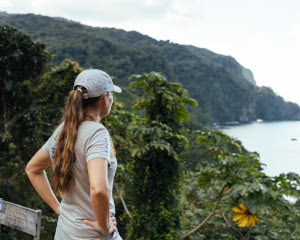
Nature’s Prescription for Our Future
By Dona Bertarelli
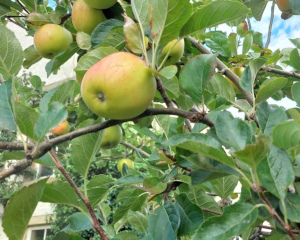
From Billion-Dollar Flows to Gooseberry Jam: Fraser Howie’s Voltairean Turn
By John Steele
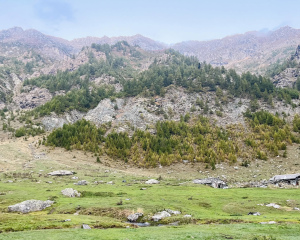
Scale Sensing: The Dance Between Geologic and Biological Time
By Willow Gatewood
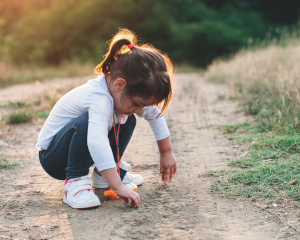
Kneeling Down to Look Again – a Way Back to Earth
By Margherita Gandolfi
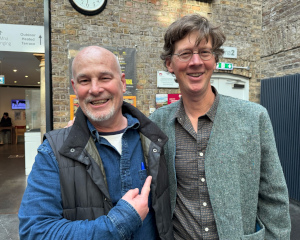
Manchán Magan’s Memories of the Bog
By Gayil Nalls

Eat More Plants Recipes:
Roasted Portobello Mushroom
By Gemma Monici
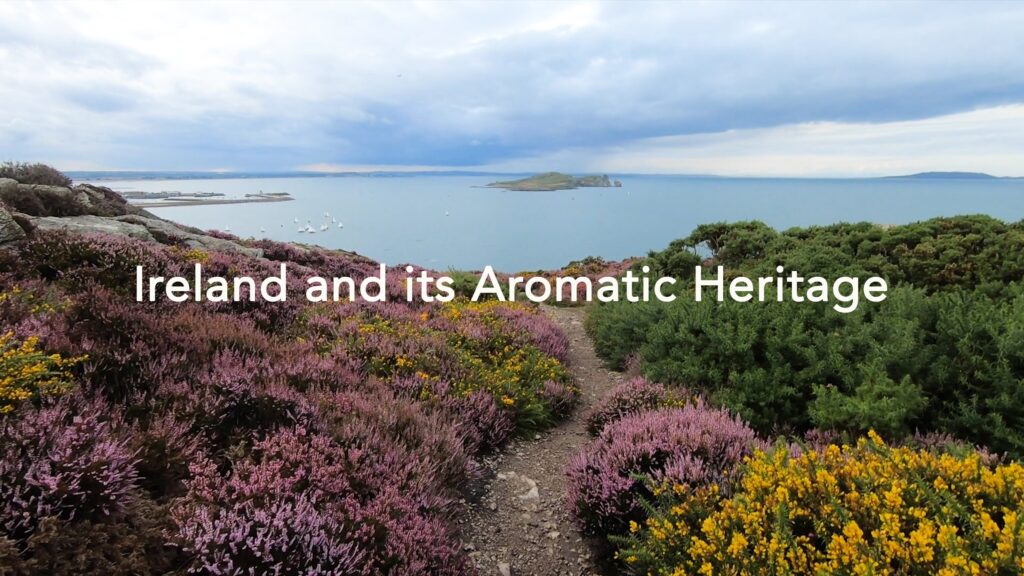
As Ireland transitions from the rich, smoky scent of peat-burning to a more sustainable future, its olfactory heritage is evolving. What will become the next iconic aromatic symbol of Ireland?
Click to watch the documentary trailer.

